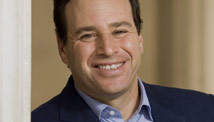Halloween craze started in gay culture

- David Frum: Halloween went global, celebrated in places such as U.K., Japan and Germany
- The real money is spent on grownup parties, costumes, club nights, Frum writes
- Frum: Some say holiday rooted in Celtic traditions, but today's parties aren't
- Gay communities started traditions that have been adopted by straights, he says
Editor's note: David Frum writes a weekly column for CNN.com. A special assistant to President George W. Bush from 2001 to 2002, he is the author of six books, including "Comeback: Conservatism That Can Win Again," and is the editor of FrumForum.
(CNN) -- Some perspective here: On Tuesday, some 37 percent of Americans are expected to turn out to vote. On Sunday, some 66 percent of Americans celebrated Halloween.
Halloween is a holiday with ancient pagan roots, but the modern extravaganza of candy, pumpkins and sexy nurse costumes is as American as the Fourth of July. Some folklorists trace Halloween to an ancient Celtic holiday in the British Isles. But until recently, the British had long forgotten the day: Two decades ago, Halloween hardly existed in the United Kingdom, never mind continental Europe or Japan.
All that has changed in the blink of an eye. Halloween has gone global -- and Halloween's success tells us something interesting about the modern world.
The British grocery chain Tesco sold 1.4 million pumpkins on Sunday. The chain estimates that its Halloween sales have tripled since 2005. British parks sponsored free Halloween spectacles: ghost walks, pumpkin carving. Trick-or-treating is spreading through London neighborhoods.
But in the United Kingdom as in the United States, the real money is found in the grownup aspects of the holiday: costumes, dance parties, club nights. The growth in adult Halloween dwarfs pumpkin sales. The British marketing firm Planet Retail estimates that overall Halloween business in the United Kingdom has jumped 2,000 percent in the past decade.
The holiday is catching in Germany, too. Influenced by U.S. military personnel, the Germans used to acknowledge Halloween as a children's holiday. But since 2000, Halloween has become an adult craze.
--David Frum
One-third of German teenagers attended some kind of Halloween party this year. The biggest of all the German Halloween parties takes place at the original Castle Frankenstein, reportedly inspiration for Mary Shelley's novel, near Darmdstadt in the Rhineland.
The Japanese have taken Halloween to over-enthusiastic heart. Consumers can now buy Halloween Bento boxes and seasonal pumpkin-flavored Kit Kat bars. Bizarre, horrifying and -- above all -- sexy costumes have become a national pastime.
To understand the global appeal of the Halloween holiday, go back to its origins. Those origins are found not in mystic Celtic folklore, but in modern gay culture.
Halloween is overwhelmingly an adult holiday. This year, for example, Americans spent an estimated $800 million on costumes for children, $1 billion on costumes for adults. Where did that adult dress-up party begin?
As best we can tell: in San Francisco's Castro neighborhood. In the 1970s, that neighborhood emerged as the heart of a new home-owning, bourgeois, coupled gay community. A local variety store had long sponsored a Halloween street festival for kids. In the 1970s, the street festival transitioned into an adult party of lavish costumed theatricality. The "Sisters of Perpetual Indulgence" -- a troupe of transvestite nuns -- got their start here.
The Castro Halloween party spread to other gay neighborhoods in the 1980s: Greenwich Village, West Hollywood, Key West, Florida. In 1994, University of Florida anthropologist Jerry Kugelmass published a book on the new trend, "Masked Culture," describing Halloween as an emerging gay "high holiday."
And after a while -- the straights imitated.
From the spread of disco in the 1970s -- to the habit of paying money for sparkling waters such as Perrier -- culminating in Halloween, gays have incubated and developed major cultural trends. Straights adopt, and then ungratefully forget whom they are adopting from -- just as American Christians forget how much of the modern Christmas music they enjoy was written by Jews, starting with the most popular of them all, Irving Berlin's "White Christmas." The majority culture forgets what the minority culture has produced.
The "masked culture" first developed by the gays of San Francisco has reached across the lines of orientation -- and now jumped across the boundaries between nations and languages. It's not just a party. It's an ideal of personal emancipation, self-expression and self-fulfillment -- an ideal that loses none of its power when it takes the form of a sexy nurse's outfit.
The opinions expressed in this commentary are solely those of David Frum.
